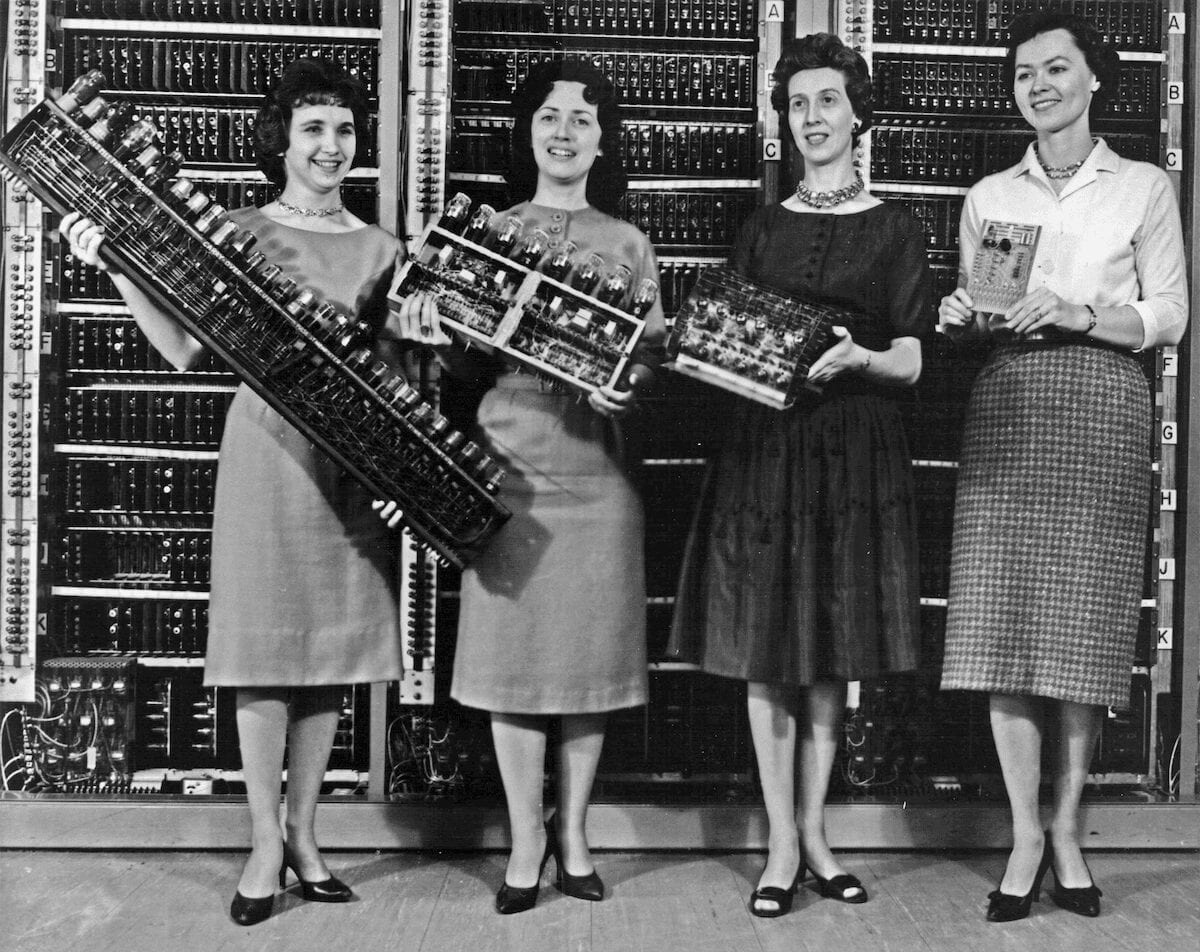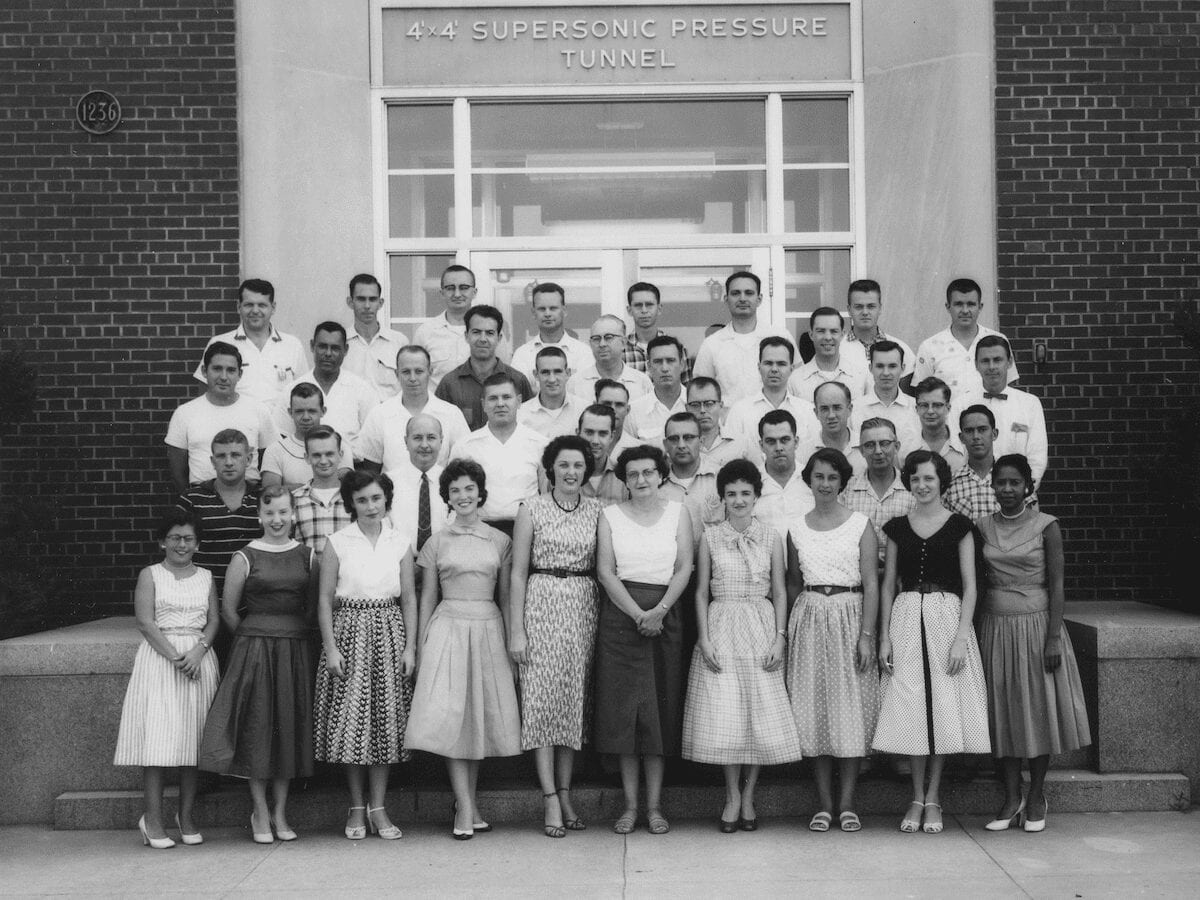Of the four bootcamps I applied to, three offered scholarships specifically for women. While one applicant isn’t a great sample size, I’m comfortable saying that 75% of software development programs have incentives for women looking to join the tech industry. There seems to be a mad dash to convince women to become programmers. And ain’t it just like a man, to come crawling back after he’s kicked you out.
Don’t worry, this isn’t a man-bashing blog; just a request to examine some of the jargon we’ve been using. I hear things like, “Women Can Code,” and, “Break into tech,” and I think they’re hilarious and inaccurate. No offense to the people who coined these and use them as a positive force for much needed change, but I simply think it’s hilarious to say that women can code when women started computer programming, and I think it’s inaccurate to describe a woman’s journey into the tech industry as “breaking in.” She’s “coming home–” and using her own key, too!
The hard cold facts are that, when computer programming started, the field was dominated by women. In fact, before there were “computers,” there were women. And guess what they called them? COMPUTERS. Back in the early 1940s and into the 1950s, women were hired across the newly born tech industry to calculate, or “compute,” complex algorithms and solve equations by hand for little unimportant things like, oh, I don’t know, rocket trajectories for NASA. While most people today would agree that that’s a big deal, at the time, computing was considered secretarial work. These days you’d have to get a degree, survive a bootcamp, or study for hours on your own before applying for a computer science or programming job. But, in the early days, you just needed to be able to “think.” When you put it like that, it doesn’t sound so hard. Not only that, but most of the workforce was on a battlefield somewhere, fighting in World War II. Beggars can’t be choosers so employers were happy to hire women to do the job. With no calculators, keyboards, laptops, or language libraries to work with, women were given pens and paper, and left at their desks to “journal out ideas” on what angle soldiers should fire their cannons.

Only a few women received credit for their important work in the technology field, and the others didn’t exactly buck the system to get it, either. In fact, many women in the industry such as, Grace Hopper, used this stereotype to urge women to get into the industry. In her 1967 Cosmopolitan article, “The Computer Girls,” she states that programming was “just like planning a dinner… Programming requires patience and the ability to handle detail. Women are ‘naturals’ at computer programming.” Others compared it to sewing and other menial household jobs.
Due to the low respect for women and the job itself, the pay was low; a woman only earned an average of $7,000– a year! Once actual computers began replacing “computers”, the tedious, detail-oriented, pain-in-the-ass job of programming them were also left to women. With their security clearance preventing them from being in the same room with the machine itself, the first programmers relied on pictures to make decisions about how best to write their code. That proved more difficult than their superiors realized. When the hubbies came back from war, women were still left to do the programming because, well, they were the only ones who knew how to do it. Eventually, the task of training the next “cohort of junior devs” fell to the women who had pioneered the work.
We know how the story ends, of course. Eventually, the stereotype of programming being an easy job for a housewife became the stereotype of programming being a complex job for a nerd with no friends. Employers began to realize the difficulty of programming and began requiring aptitude tests before hiring new programmers. Interviewers stopped looking for stereotypically “feminine” characteristics and started valuing “masculine” characteristics, whatever that means. The media played its part by airing commercials that displayed men as the techies. Either way, the men moved in, the respect for the job went up, and the pay went up with it. But, the industry is changing again and, once more, there are more jobs than people, just as it was during WWII. The men are not at war, but there is still plenty of room for women programmers in the tech industry. And why shouldn’t there be?! Women programmed the first computer. They taught the first cohort of computer programming students. And they did it for less than half the money and none of the benefits! From computers to computers, we were there first!
Being the minority in a currently male dominated field is hard! When you start to feel lonely, say the following names to remind yourself that the way has already been paved for you and you are not alone.
Cryptographers – Joyce Aylard, Joan Clarke, Margaret Rock, Mavis Batey, Ruth Briggs, Kerry Howard.
ENIAC programmers – Adele Goldstein and her “ENIAC Girls” – Marlyn Meltzer, Betty Holberton, Kathleen Antonelli, Ruth Teitelbaum, Jean Bartik, Frances Spence.
NASA Computers – Mary Jackson, Dorothy Vaughan, Katherine Johnson Christine Darden
Grace Hopper – the first person to create a compiler for a programming language.
And that’s not all of them! Just ask Wikipedia!

About us: Career Karma is a platform designed to help job seekers find, research, and connect with job training programs to advance their careers. Learn about the CK publication.



